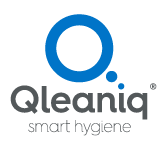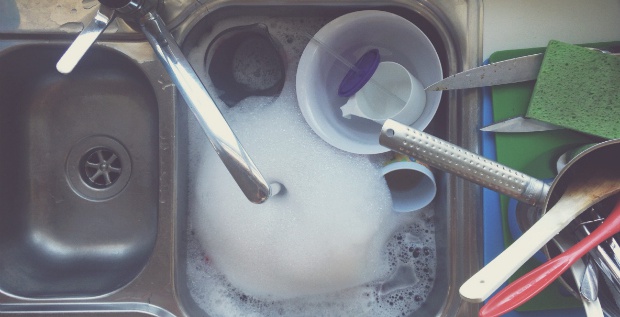Think your kitchen is squeaky clean? Not so fast. “Moisture and food particles make it the perfect environment for growing germs that can make you sick,” says Kelly A. Reynolds, PhD, an environmental microbiologist at the University of Arizona’s Zuckerman College of Public Health in Tucson. “If you’re not killing them, you can go from 10 microbes to millions within 24 hours.” And the more germs there are, the more likely you are to get sick from one. Here’s where they’re hiding and what you can do about it.
1. Your kitchen sink
“There can be millions of pathogens (disease-causing germs) clinging to the sink, the seal of the drain, and the rubber gasket around the garbage disposal,” says Dr. Reynolds. While proper cooking lowers your chance of foodborne illness, germs like salmonella, which lives in much of the chicken you bring home, can linger in your sink after you wash the food that contains it. Touch your face after touching the sink and you’ve just spread the germs.
What to do: Clean your sink immediately after rinsing raw meat, veggies, and pet bowls and once a day even when you don’t wash food or pet dishes. Spray a disinfectant (look for the EPA registration number in tiny print on the label), which kills most bacteria and viruses, on the faucet, sink sides, sink bottom and sink strainers. “Don’t just wipe and go. Leave the product on the surface for the contact time recommended on the label,” says Dr. Reynolds.
2. Your sponge, dish rag, and scrubbing brush
The public health organization NSF International that more than 75% of household dish sponges and rags carry disease-causing Coliform bacteria such as E. coli. “Using the same dishrag day after day spreads the microbes,” says Robert Donofrio, PhD, director of microbiology at NSF International. A dirty rag contaminates any surface it touches, so if you eat off one of those surfaces, you can fall ill.
What to do: Replace dishrags daily. Launder in hot water and dry on hot, which kills more germs. Change out sponges every few days, or throw one in the microwave — make sure it’s damp so it doesn’t catch on fire — for two minutes every day, says Dr. Donofrio. For a dish brush, spray it daily with disinfectant or put it in the dishwasher, says Dr. Reynolds.
3. Your hands
If you’ve just cracked an egg or handled unwashed produce, raw meat, or poultry or pet bowls, your hands can transfer disease-causing germs to the next surface you touch, says Dr. Donofrio.
What to do: Plan ahead. “Get out everything you need, such as the knife, the cutting board and the pot, so you’re not opening cabinet drawers and contaminating surfaces” once you’ve touched the food, says Dr. Donofrio. After dirty duties, soap up the tops and bottoms of your hands, in between fingers and under nails. Scrub for 20 seconds (hum “Happy Birthday” twice), then rinse. Dry with a clean hand towel or paper towel.
RELATED: 8 Things You Think Are Dirty — But Aren’t »
4. Your coffee maker
Coffee might not be the only thing brewing in there. The NSF found yeast and mold growing in about half the coffee pot reservoirs they surveyed. “These organisms can cause allergic responses in some people,” says Dr. Donofrio — and make your coffee taste bad too, says Dr. Reynolds.
What to do: Once a month, fill the reservoir with vinegar and let it stand for 30 minutes. Run a cycle with the vinegar followed by several clean water cycles. Between uses, wash the individual coffee pot parts (such as the brew basket) and let them dry. Although single-serve coffee pots weren’t tested, Dr. Donofrio suggests following the same regimen for them.
5. Your handbag, backpack, briefcase, or computer bag
You set these items on dirty surfaces, like the shopping cart seat where diapered baby bottoms and raw foods leave behind germs. Then, you toss your bags on the kitchen counter when you get home. “Anything you carry with you all day can pick up germs,” says Dr. Reynolds. “In fact, about half of women’s handbags have fecal bacteria on them.” (Yuck!)
What to do: Because no product disinfects fabric, keep items you carry daily away from food preparation areas, says Dr. Reynolds. If your bag is leather, swipe a disinfectant wipe across the bottom once a week. But test in a hidden area first to make sure it doesn’t damage the material.
6. Refrigerator and cabinet handles, stove knobs, and light switches
“We often forget about these areas because they may not look dirty,” says Liz Trotter, owner of American Maid Cleaning in Olympia, WA. But any area you touch multiple times a day is highly likely to be contaminated.
What to do: Wipe down these areas as part of your regular kitchen disinfecting routine, says Trotter. Keep cleaning products in a bucket under the sink so they’re always handy. At a minimum, swipe a disinfectant wipe across these surfaces at least once a month and immediately following touching them after handling unwashed produce and raw poultry and meat, advises Dr. Reynolds.
RELATED: 21 Cleaning Problems You Can Solve With Baking Soda »
7. Your garbage can
No matter how careful you are, food particles, meat juices and other nasty stuff build up on your trash can. “That’s why it gets smelly. The odor is the mold or bacteria multiplying,” says Dr. Reynolds. Touching the lid and then another surface can transfer germs.
What to do: Once a week, take your garbage can outdoors or haul it into your shower, says Dr. Reynolds. Spray inside and out with a disinfectant, let it sit for the time recommended on the label, then rinse and let it air-dry. Don’t forget to disinfect the cabinet handle and door if your garbage can is the pull-out type, says Trotter.
8. The countertop
Even if you wipe it down every day, it’s not necessarily clean. Anything you place on the counter — unwashed produce, grocery bags, lunch boxes, backpacks — can deposit germs. In fact, the NSF International study found that about a third of counters had Coliform bacteria, aka fecal contamination, says Dr. Donofrio.
What to do: Disinfect your counter before and after preparing both raw and cooked food, says Dr. Reynolds. Keep pets and their dishes and toys off the counter, since they can carry bacteria such as Staph. And don’t drop items you lug all day, like your purse, on the countertop.
9. Your microwave
You’d think the heat kills germs, but “your microwave isn’t a sterile environment,” says Dr. Reynolds. “Bacteria are resilient and can lie dormant if you’re not regularly disinfecting the surface.”
What to do: Wipe down with a disinfectant inside and out at least once a week, advises Dr. Reynolds. Clean up spills as they occur to prevent microbes from multiplying — and the odors that result. Cover foods to prevent splatters and future microbe growth.
10. Reusable grocery bags
Half of these bags tested in a recent University of Arizona/Loma Linda University study carried disease-causing bacteria such as E. coli. They don’t start that way, though; no unused bags contained germs. “The problem is most reusable bags are porous, so juices from meat can soak into the fibers,” says Dr. Reynolds. “They’re also often not made of materials that can withstand a hot water wash.”
What to do: Look for bags that are washable (usually those made of cotton, not the commonly used woven polypropylene), then launder in hot water and dry on hot after use or at least once a week.
NEXT: 5 Sneaky Places Mold Can Hide in Your Home »
Photo: Getty Images


